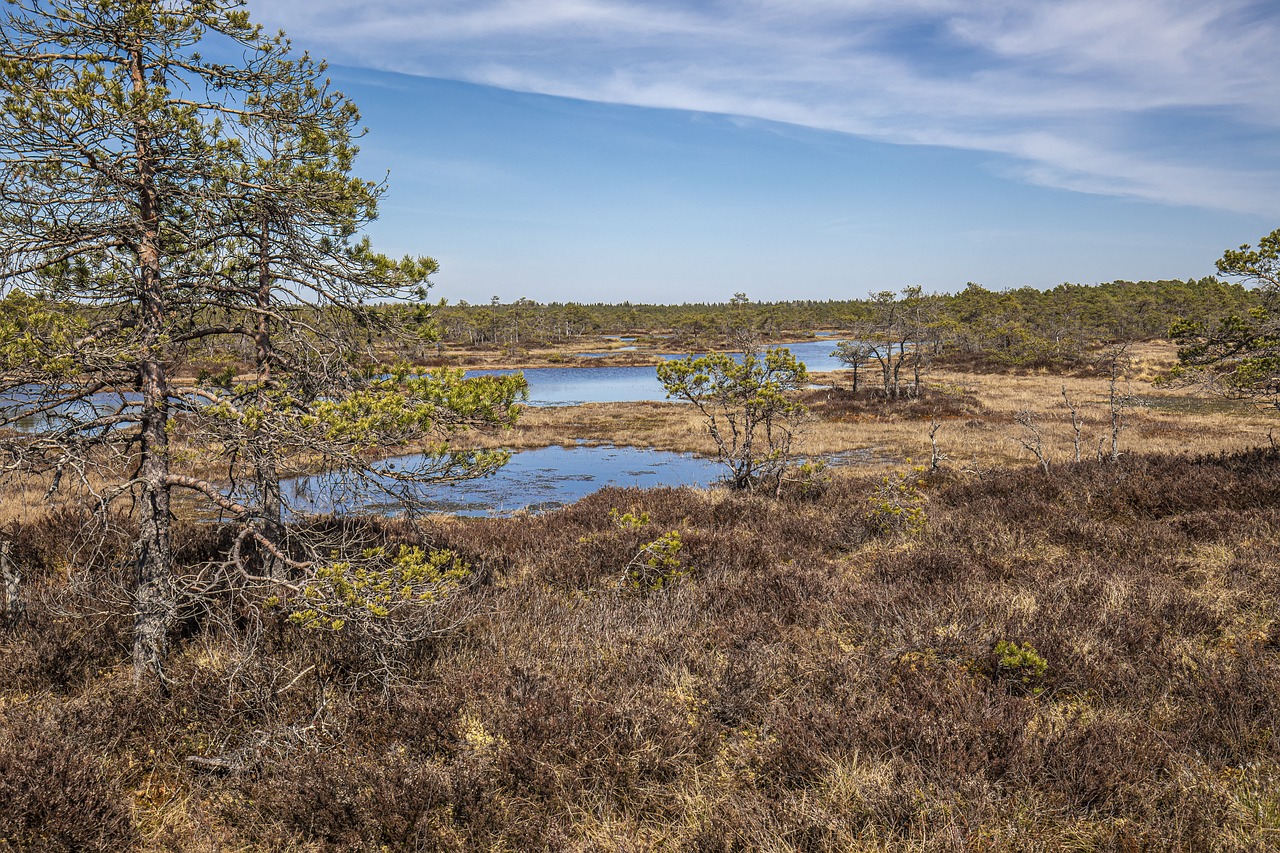Kakerdaja Bog is a well-known natural attraction in Estonia, celebrated for its pristine landscapes and rich biodiversity. Here is an overview of this beautiful bog:
Location
- Region: Kakerdaja Bog is located in Northern Estonia, within the Kõrvemaa Nature Reserve.
- Accessibility: It is accessible from nearby towns and cities, with several trails and boardwalks making it easy to explore the bog.
Features
- Landscape: The bog is characterized by vast open spaces, numerous small lakes, and pools. The terrain is mostly flat, with sphagnum moss, dwarf shrubs, and pine trees dominating the vegetation.
- Vegetation: Typical bog vegetation includes various species of mosses, heathers, cranberries, and cloudberries. Small, stunted pines and birches are scattered throughout the bog.
- Wildlife: Kakerdaja Bog is home to a variety of wildlife. Birdwatchers can spot species such as cranes, wood sandpipers, and golden plovers. The bog also supports a range of insects, amphibians, and small mammals.
- Seasons: The bog transforms with the seasons, offering different experiences. In spring and summer, it bursts with flowers and insect activity. Autumn brings vibrant colors, and in winter, the bog is often covered in a blanket of snow.
Activities
- Hiking: There are well-marked trails and boardwalks that allow visitors to explore the bog without damaging the fragile ecosystem. These trails range from short walks to longer hikes.
- Birdwatching: The bog is a popular spot for birdwatching, especially during migration seasons when various bird species can be observed.
- Photography: The scenic beauty of Kakerdaja Bog makes it a favorite spot for nature photographers, especially during sunrise and sunset when the light creates stunning reflections on the water.
- Nature Observation: Educational signs along the trails provide information about the bog’s ecosystem, flora, and fauna, making it a great place for learning and observing nature.
Conservation
- Protected Area: Kakerdaja Bog is part of the Kõrvemaa Nature Reserve, which helps protect its unique ecosystem and biodiversity.
- Conservation Efforts: Efforts are made to maintain the natural state of the bog, including controlling visitor access to sensitive areas and promoting sustainable tourism practices.
Interesting Facts
- Name Origin: The name “Kakerdaja” comes from the Estonian word “kakerdama,” which means “to wander.” It reflects the wandering paths and trails that meander through the bog.
- Cultural Significance: Bogs and mires hold cultural significance in Estonia, often associated with folklore and traditional uses such as berry picking and natural remedies.
Visiting Tips
- Best Time to Visit: While Kakerdaja Bog can be visited year-round, late spring to early autumn offers the most comfortable weather and vibrant scenery.
- Preparation: Visitors should wear appropriate footwear, such as waterproof boots, and bring insect repellent, especially during the summer months.
- Respect Nature: It’s important to stay on marked trails to protect the delicate bog environment and follow the principles of Leave No Trace.
Kakerdaja Bog is a natural gem in Estonia, offering visitors a serene and picturesque escape into nature. Its diverse flora and fauna, combined with well-maintained trails, make it an excellent destination for outdoor enthusiasts and nature lovers.d humans.
Visited 816 times, 1 visit(s) today
Views: 1244
Subscribe to the newsletter:
